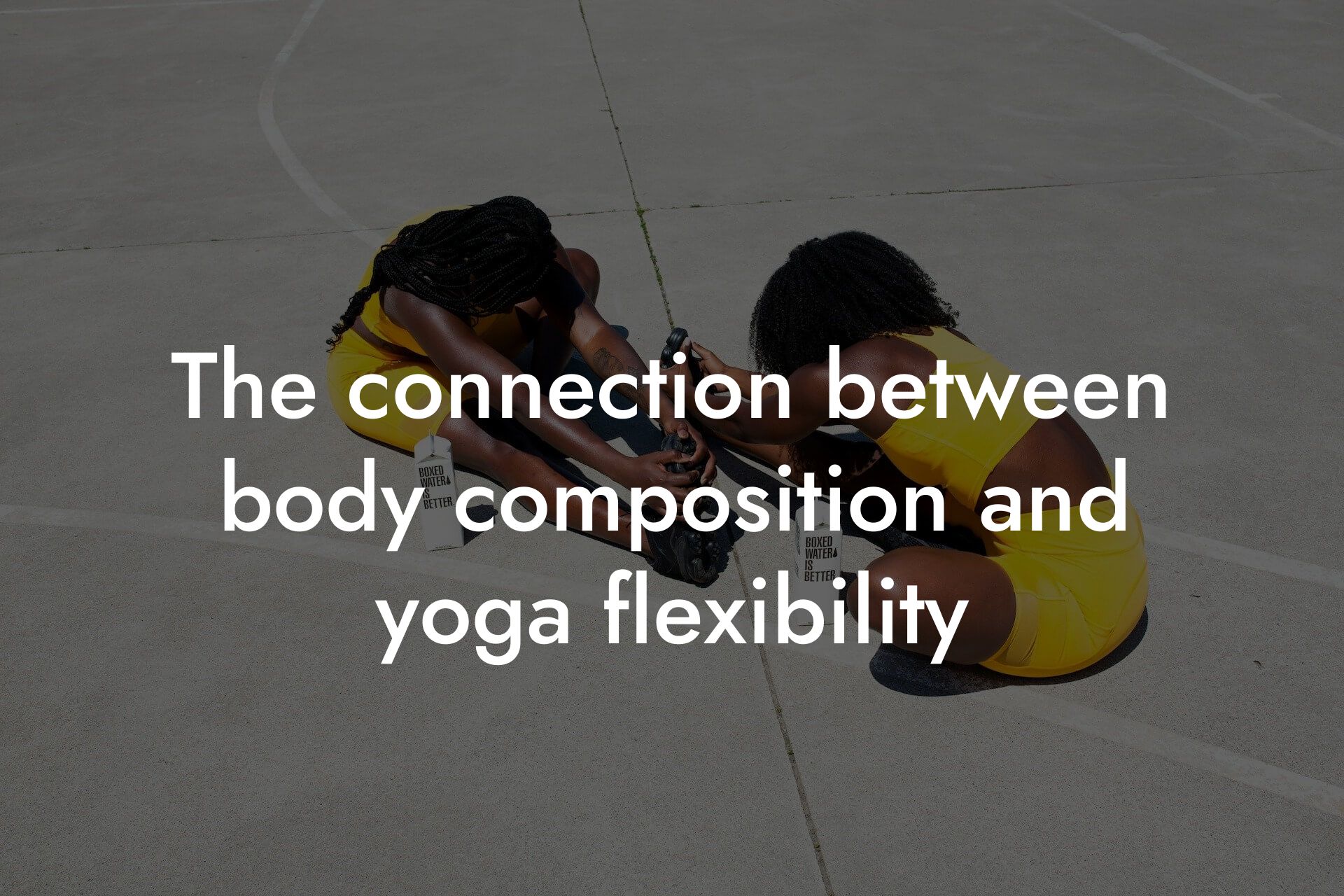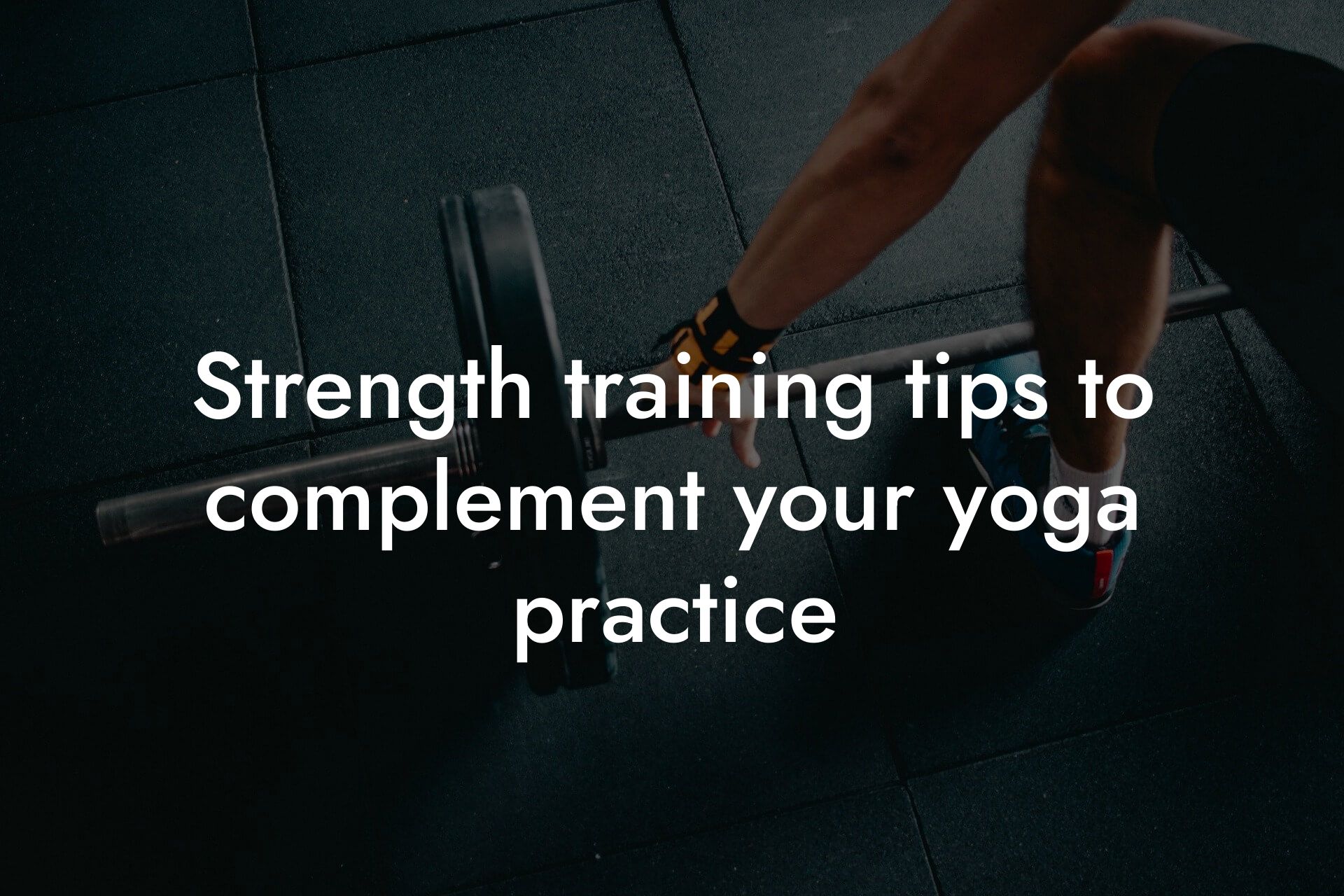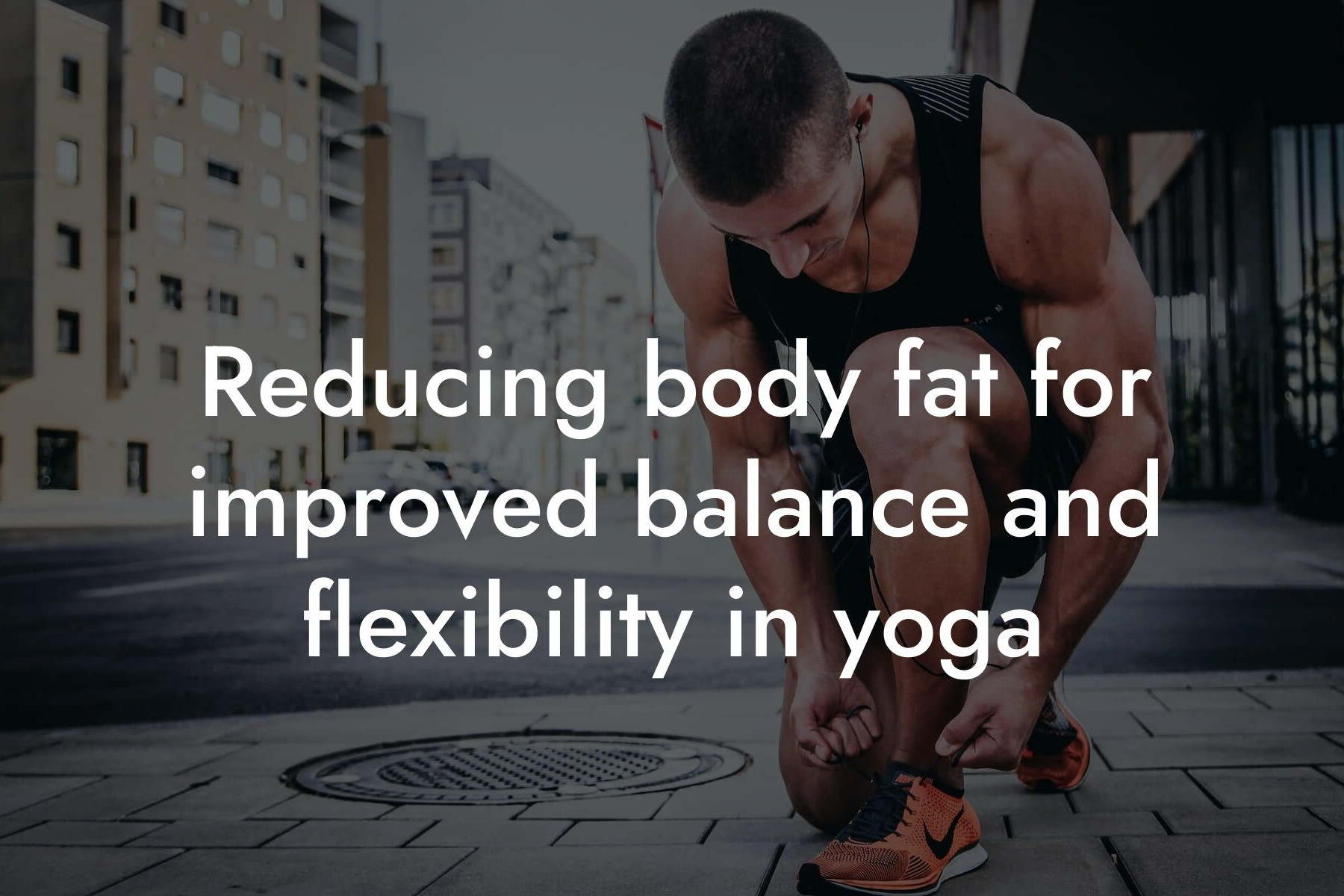As high-earning professionals, taking care of your physical appearance and overall well-being is essential to perform at your best in both personal and professional life. Yoga is an excellent way to achieve this balance, focusing on three key elements: strength, flexibility, and mindfulness. In this article, we'll delve into the importance of balancing these components and provide you with a comprehensive guide to incorporating yoga into your lifestyle.
Table of Contents
- Why Yoga is Essential for High-Earning Professionals
- The Importance of Strength in Yoga
- The Role of Flexibility in Yoga
- The Power of Mindfulness in Yoga
- How to Balance Strength, Flexibility, and Mindfulness in Your Yoga Practice
- Creating a Yoga Practice That Works for You
- Incorporating Yoga into Your Busy Schedule
- Frequently Asked Questions
Why Yoga is Essential for High-Earning Professionals
High-earning professionals often lead busy and stressful lives, which can take a toll on their physical and mental health. Yoga offers a unique solution to combat these challenges, providing numerous benefits that can enhance overall performance and well-being. By incorporating yoga into your routine, you can:
- Reduce stress and anxiety
- Improve flexibility and range of motion
- Enhance strength and muscle tone
- Boost energy levels and mental clarity
- Improve sleep quality
The Importance of Strength in Yoga
Building strength is a crucial aspect of yoga, as it helps improve overall physical fitness and enhances performance in daily activities. In yoga, strength is not just about building muscle mass; it's about developing functional strength that translates to real-life movements. A strong yoga practice can help you:
- Improve posture and reduce back pain
- Enhance athletic performance
- Increase bone density
- Boost metabolism and burn fat
To incorporate strength-building exercises into your yoga practice, focus on poses that engage your core, arms, and legs, such as:
- Planks and variations
- Chaturangas and push-ups
- Squats and lunges
- Warrior poses and variations
The Role of Flexibility in Yoga
Flexibility is another essential component of yoga, allowing for greater range of motion and reducing the risk of injury. Increased flexibility can also improve overall mobility and enhance athletic performance. A regular yoga practice can help you:
- Increase flexibility and range of motion
- Reduce muscle tension and improve circulation
- Enhance balance and coordination
- Improve posture and reduce back pain
To improve flexibility, focus on poses that target specific muscle groups, such as:
- Hamstring and hip openers
- Chest and shoulder stretches
- Quad and calf stretches
- Spinal twists and extensions
The Power of Mindfulness in Yoga
Mindfulness is the often-overlooked yet incredibly powerful aspect of yoga. By cultivating mindfulness, you can improve mental clarity, reduce stress, and enhance overall well-being. Mindfulness in yoga involves being present in the moment, focusing on your breath, and quieting the mind. This can be achieved through:
- Meditation and pranayama practices
- Focused attention on the breath
- Body scan and relaxation techniques
- Yoga Nidra and guided meditation
How to Balance Strength, Flexibility, and Mindfulness in Your Yoga Practice
Now that you understand the importance of each component, it's essential to learn how to balance them in your yoga practice. Here are some tips to help you achieve harmony:
- Start with a dynamic warm-up to build strength and flexibility
- Incorporate mindfulness practices throughout your sequence
- Focus on functional strength exercises that engage multiple muscle groups
- Hold poses for longer periods to build strength and endurance
- End with relaxation and meditation to calm the mind and body
Creating a Yoga Practice That Works for You
Every individual is unique, and what works for one person may not work for another. To create a yoga practice that suits your needs, consider the following:
- Identify your goals and priorities
- Choose a yoga style that resonates with you (e.g., Hatha, Vinyasa, Restorative)
- Start slow and gradually increase intensity and duration
- Listen to your body and modify or rest when needed
- Make yoga a consistent part of your routine
Incorporating Yoga into Your Busy Schedule
As a high-earning professional, finding time for yoga can be challenging. However, with a little creativity, you can incorporate yoga into even the busiest of schedules:
- Start with short practices (20-30 minutes) and gradually increase duration
- Practice yoga during your lunch break or before work
- Use online resources and apps to guide your practice
- Find a yoga studio or gym that offers convenient class schedules
- Make yoga a non-negotiable part of your daily routine
Balancing strength, flexibility, and mindfulness in yoga is a journey that requires patience, dedication, and self-awareness. By incorporating yoga into your lifestyle, you can enhance your physical appearance, improve your overall well-being, and take your business to the next level. Remember to listen to your body, be gentle with yourself, and make yoga a consistent part of your routine. With time and practice, you'll experience the transformative power of yoga and unlock your full potential.
At Tano Performance Group, we understand the importance of taking care of your physical health and overall well-being. Our DEXA machine provides a comprehensive body assessment, giving you the information you need to make informed decisions about your health and fitness. Combine this with a regular yoga practice, and you'll be unstoppable.
Frequently Asked Questions
What is the importance of balancing strength, flexibility, and mindfulness in yoga?
Balancing strength, flexibility, and mindfulness in yoga is crucial for achieving overall physical and mental well-being. Strength provides stability and support, flexibility allows for a full range of motion, and mindfulness brings awareness and focus to the practice. By balancing these elements, you can improve your posture, reduce injury risk, and enhance your overall yoga experience.
How does strength training benefit yoga practice?
Strength training can help improve your yoga practice by increasing your power, endurance, and overall physical ability. It can also help you maintain proper alignment, reduce muscle imbalances, and enhance your overall physical performance.
What are some common strength-building yoga poses?
Some common strength-building yoga poses include Plank Pose, Chaturanga Dandasana, Warrior Pose, Triangle Pose, and Tree Pose. These poses engage multiple muscle groups, helping to build overall strength and stability.
How can I improve my flexibility in yoga?
To improve your flexibility in yoga, focus on holding poses for longer periods, practicing gentle and controlled movements, and incorporating props such as blocks, straps, and blankets to assist with deeper stretches. Additionally, regular practice, patience, and consistent effort can help increase your flexibility over time.
What are some yoga poses that can help improve flexibility?
Some yoga poses that can help improve flexibility include Downward-Facing Dog, Cobra Pose, Seated Forward Fold, Pigeon Pose, and Hanumanasana. These poses target key areas such as the hamstrings, hip flexors, and spine, helping to increase flexibility and range of motion.
What is mindfulness in yoga, and how can I cultivate it?
Mindfulness in yoga refers to the practice of being fully present and aware in the moment, without judgment or distraction. To cultivate mindfulness, focus on your breath, pay attention to your body and its sensations, and practice meditation and deep relaxation techniques. Regular mindfulness practice can help reduce stress, improve focus, and enhance overall well-being.
How can I incorporate mindfulness into my yoga practice?
To incorporate mindfulness into your yoga practice, start by setting an intention before your practice, focus on your breath and body sensations during poses, and practice meditation and deep relaxation techniques at the end of your practice. You can also try incorporating mindfulness exercises, such as body scan meditation or walking meditation, into your daily routine.
What are some common mistakes to avoid in yoga?
Some common mistakes to avoid in yoga include pushing past pain or discomfort, not listening to your body, and comparing yourself to others. It's also important to avoid overexertion, poor alignment, and inadequate warm-up and cool-down routines.
How can I prevent injuries in yoga?
To prevent injuries in yoga, focus on proper alignment, listen to your body and modify or rest when needed, and practice gentle and controlled movements. It's also important to warm up and cool down properly, use props when necessary, and avoid pushing past pain or discomfort.
What are some benefits of yoga for high-earning professionals?
Yoga can provide numerous benefits for high-earning professionals, including reduced stress and anxiety, improved focus and productivity, enhanced physical performance, and increased overall well-being. Yoga can also help improve sleep quality, boost energy levels, and increase self-awareness and confidence.
How can I fit yoga into my busy schedule?
To fit yoga into your busy schedule, try practicing at home, taking online classes, or incorporating short yoga breaks into your daily routine. You can also try practicing yoga during your lunch break, before bed, or first thing in the morning.
What are some yoga styles that are suitable for beginners?
Some yoga styles that are suitable for beginners include Hatha Yoga, Vinyasa Yoga, and Restorative Yoga. These styles focus on basic poses, gentle movements, and relaxation techniques, making them ideal for those new to yoga.
How often should I practice yoga?
The frequency of yoga practice depends on individual goals and needs. For beginners, 2-3 times per week is a good starting point. For more advanced practitioners, 4-5 times per week can be beneficial. It's also important to listen to your body and rest when needed.
What should I wear to yoga class?
Wear comfortable, breathable clothing that allows for a full range of motion. Avoid loose or baggy clothing that may get in the way of your practice. You may also want to consider investing in a good yoga mat and props such as blocks, straps, and blankets.
Do I need to be flexible to practice yoga?
No, you don't need to be flexible to practice yoga. Yoga is for every body, regardless of age, size, or flexibility level. With the use of props and modifications, yoga can be adapted to meet individual needs and abilities.
Can I practice yoga if I have an injury or chronic condition?
Yes, you can practice yoga if you have an injury or chronic condition. However, it's important to consult with a healthcare professional or yoga therapist to develop a practice that is safe and beneficial for your specific needs. Yoga can help improve flexibility, strength, and range of motion, as well as reduce pain and discomfort.
How can I find a good yoga teacher or studio?
To find a good yoga teacher or studio, research local studios and teachers, read reviews and testimonials, and ask for referrals from friends or healthcare professionals. It's also important to observe a class or take a private lesson before committing to a teacher or studio.
What is the importance of breathing in yoga?
Breathing is essential in yoga, as it helps to calm the mind, balance the body, and facilitate movement. Proper breathing techniques can also help to reduce stress, improve focus, and enhance overall physical and mental well-being.
How can I use yoga to improve my physique?
Yoga can help improve your physique by increasing strength, flexibility, and balance, as well as reducing body fat and improving overall physical performance. Regular yoga practice can also help improve posture, reduce muscle imbalances, and enhance overall physical appearance.
Can yoga help with weight loss?
Yes, yoga can help with weight loss by increasing metabolism, improving digestion, and reducing stress and anxiety. Regular yoga practice can also help build muscle mass, improve overall physical performance, and enhance overall well-being.
How can I incorporate yoga into my fitness routine?
To incorporate yoga into your fitness routine, try practicing yoga 2-3 times per week, and combine it with other forms of exercise such as cardio, strength training, or Pilates. You can also try incorporating yoga into your warm-up or cool-down routines, or using yoga as a recovery tool after intense exercise.
What are some common yoga myths?
Some common yoga myths include the idea that yoga is only for flexible people, that yoga is a religion, or that yoga is only for relaxation. These myths are debunked by the fact that yoga is for every body, regardless of age, size, or flexibility level, and that yoga can be a physically challenging and transformative practice.
How can I make yoga a sustainable part of my lifestyle?
To make yoga a sustainable part of your lifestyle, try setting a regular practice schedule, investing in a good yoga mat and props, and finding a yoga community or accountability partner. You can also try incorporating yoga into your daily routine, such as practicing yoga during your lunch break or before bed.
What are some yoga resources for beginners?
Some yoga resources for beginners include online yoga classes, yoga apps, and beginner-friendly yoga books and DVDs. You can also try taking a beginner's yoga workshop or class, or working with a private yoga instructor to develop a personalized practice.
Here are some related articles you might love...
- The connection between body composition and yoga flexibility
- Strength training tips to complement your yoga practice
- Reducing body fat for improved balance and flexibility in yoga
- Nutrition strategies for sustained energy in yoga practice
- How DEXA scans can benefit yoga enthusiasts
- Bone density and its impact on yoga practice
- Maintaining muscle tone and flexibility with yoga
- Recovery techniques for yogis after intense sessions
- The role of yoga in injury prevention and recovery
Zak Faulkner
Zak Faulkner is a leading authority in the realm of physical health and body composition analysis, with over 15 years of experience helping professionals optimise their fitness and well-being. As one the experts behind Tano Performance Group, Zak has dedicated his career to providing in-depth, science-backed insights that empower clients to elevate their physical performance and overall health.
With extensive knowledge of DEXA technology, Zak specializes in delivering comprehensive body assessments that offer precise data on body fat, muscle mass, bone density, and overall physique. His expertise enables individuals to make informed decisions and achieve their fitness goals with accuracy and confidence. Zak’s approach is rooted in a deep understanding of human physiology, combined with a passion for helping clients unlock their full potential through personalised strategies.
Over the years, Zak has earned a reputation for his commitment to excellence, precision, and client-focused service. His guidance is trusted by top professionals who demand the best when it comes to their health. Whether advising on fitness programs, nutritional strategies, or long-term wellness plans, Zak Faulkner’s insights are a valuable resource for anyone serious about taking their health and fitness to the next level.
At Tano Performance Group, Zak continues to lead our Content Team revolutionising how professionals approach their physical health, offering unparalleled expertise that drives real results.




